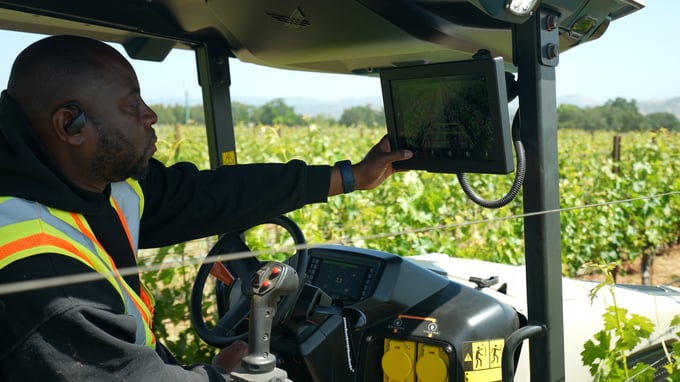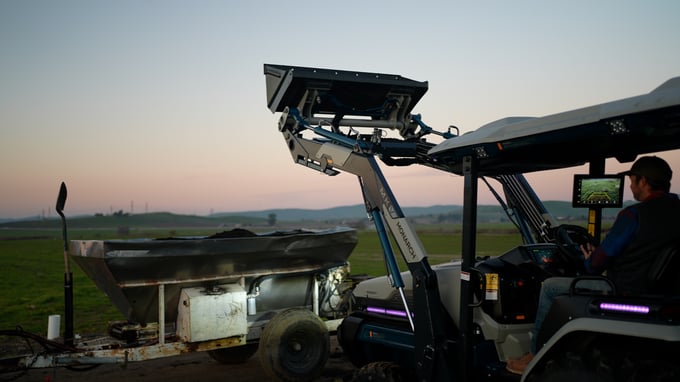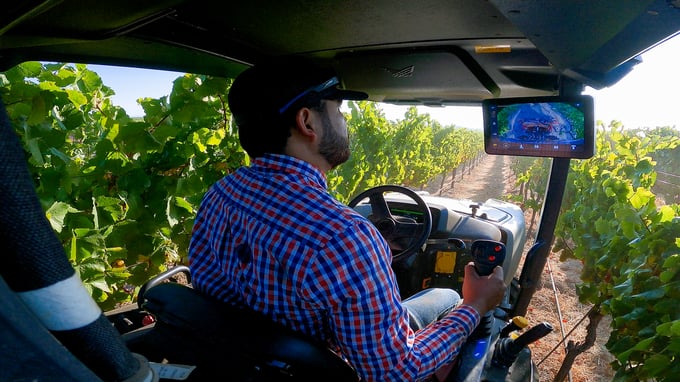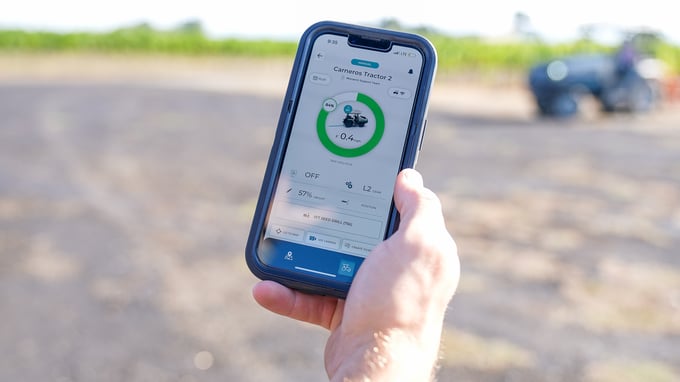Throughout the history of agriculture, new tools, technologies, and innovations have driven ever-more productive growing seasons, marked by an especially dramatic increase in the latter half of the twentieth century. While this green revolution was thought to be an improvement for farmers, the resulting shift of agricultural land management to greater reliance on external inputs have led to roughly half of U.S. produce growers operating at a loss. Even worse, the resulting dependence on fossil fuels and ag petrochemicals has only led to soil degradation, pollinator population collapse, poor air quality, and reduced farm sustainability.
Understandably, such circumstances have left many farmers unable or wary to adopt new technologies. Yet many of the current advancements in AgTech are being engineered to help farmers achieve effective, productive strategies that protect their long-term livelihood. There’s always a risk when it comes to embracing new technology, but carefully weighing the options and potential gains can make it worth taking the chance.
What Is the Role of Technology in Modern Farming?
Over the years, farming and technology have continuously evolved together. “Technology,” of course, doesn’t just refer to specific tools — it also refers to:
- Farming innovations and practices, such as understanding the concept of soil depletion
- Ecological understandings and preservation procedures
- Scientific advancements
Technology is at the forefront of modern farming, playing a key role in enhancing efficiency, sustainability, and productivity. Precision and digital agriculture technologies, like GPS-connected tractors, drone surveillance, and soil sensors, are enabling farmers to manage their crops and livestock more accurately and effectively. Farmers can monitor various field conditions in real time, allowing for timely decision making and interventions.
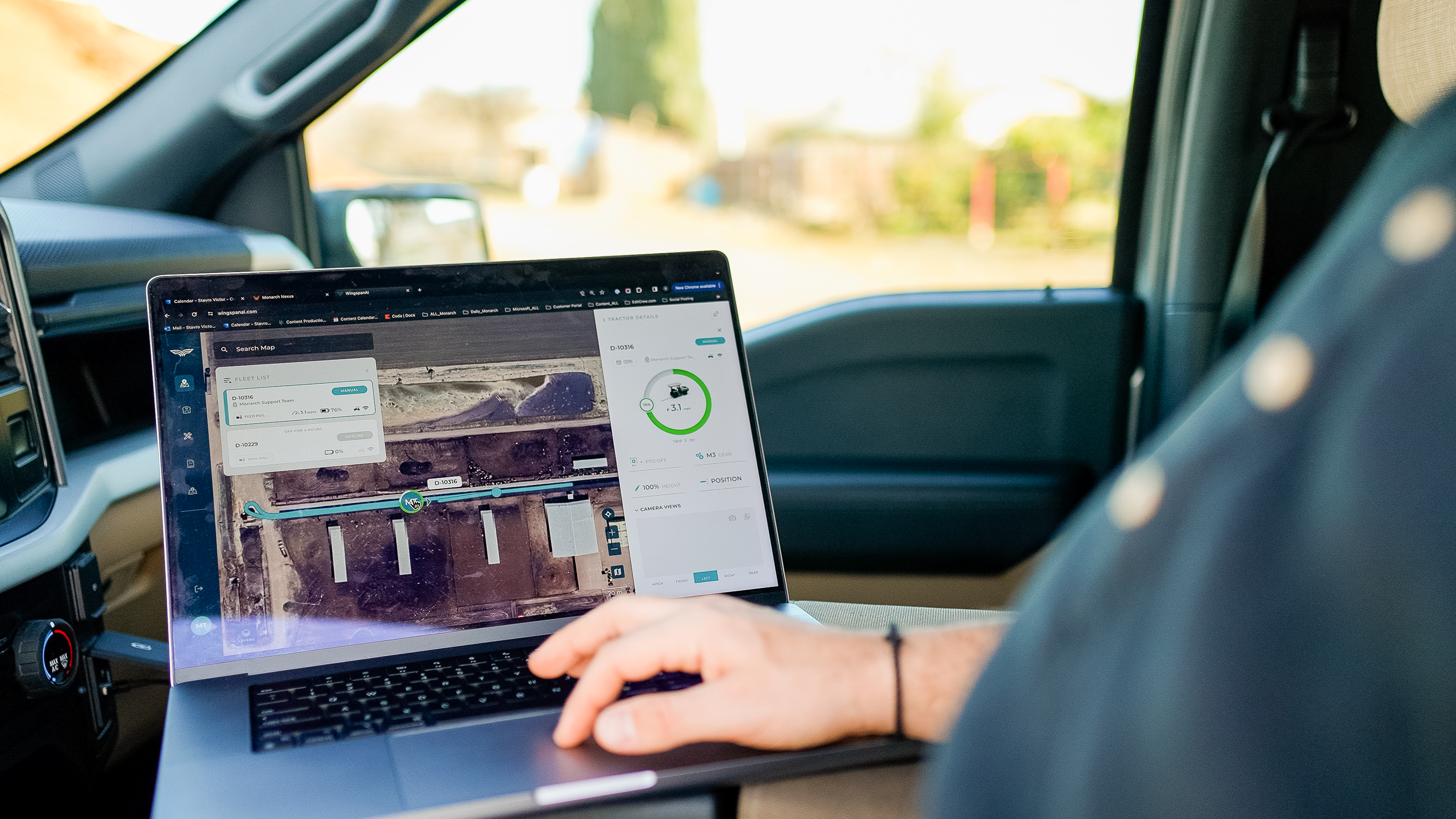 Automated machinery helps farmers manage substantial workloads and reduce labor shortage problems. Moreover, artificial intelligence applications in predictive analytics assist in anticipating yield outcomes, potential pest infestations, and weather-related events, contributing to risk mitigation. Mobile apps and online platforms provide real-time market data, supporting farmers in making more informed selling decisions. Electrification eliminates emissions for cleaner, safer work environments while saving an agribusiness thousands of dollars each year in averted diesel and maintenance costs.
Automated machinery helps farmers manage substantial workloads and reduce labor shortage problems. Moreover, artificial intelligence applications in predictive analytics assist in anticipating yield outcomes, potential pest infestations, and weather-related events, contributing to risk mitigation. Mobile apps and online platforms provide real-time market data, supporting farmers in making more informed selling decisions. Electrification eliminates emissions for cleaner, safer work environments while saving an agribusiness thousands of dollars each year in averted diesel and maintenance costs.
Technology in farming creates a landscape that embraces sustainable practices and increases resilience while also addressing the rising demand for food worldwide.
What Is the History of Significant Farming Innovations?
Over the history of agriculture, many significant farming innovations have helped push the industry forward. Some notable advancements include:
- Irrigation systems, from rudimentary to advanced, help maintain optimal moisture levels throughout the year in a variety of different environments, maximizing crop yields. Ditches and canals continue to be used today alongside more sophisticated irrigation systems and forms of technology that incorporate the use of timers and apps, giving farmers the ability to monitor irrigation on their smartphone, tablet, or laptop.
- Crop rotations are a preventative against soil degradation and nutrient depletion, allowing farmers to continue to use the same plot of land by replenishing its nutrients and maintaining optimal soil conditions.
- The internal combustion engine tractor, or ICE tractor, allowed much faster and more productive plowing, harvesting, and much more. The basic concept of the ICE tractor hasn’t changed in over 100 years. Forward-thinking companies like Monarch Tractor are reimagining the tractor as an advanced piece of high-tech farm equipment that can help move a farm towards profitability and sustainability.
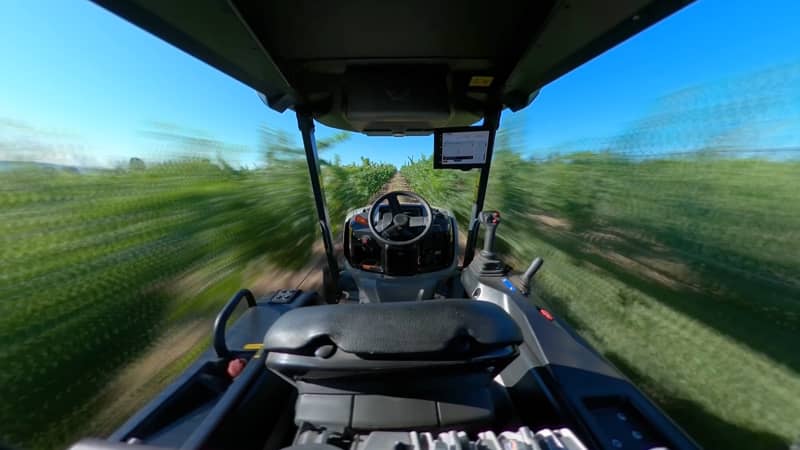
- Genetic engineering has led to the growing of produce tailored to consumer preferences such as seedless watermelons. Another goal has been the development of pest-resistant plants that can thrive without the use of pesticides, but study results are varied so far, and research is ongoing. It’s also worth pointing out that seedless plants remove a farmer’s ability to grow and save seeds for the next year’s crop thus incurring an annual expense in seed purchase.
- Precision agriculture tools and farm equipment, which provide real-time control and monitoring of farm operations. Instead of manually checking every corner of the farm, farmers can monitor operations using drones and IoT devices, short for “internet of things”. These tools provide real-time data on crop health, soil conditions, and weather patterns, enabling farmers to make timely adjustments and optimize their yield.
- Automation in farming equipment increases productivity and safety while reducing the demands on manual labor. With farm labor being in chronically short supply, automated farm equipment alleviates an ongoing challenge and enables farm crews to stay on top of timely operation schedules.
- Sustainable AgTech tools and technologies empower farmers to make the most of land and natural resources. As knowledge about ecosystems and the environment increases, sustainable AgTech tools are helping farmers simultaneously maximize and protect their natural resources. These technologies include precision irrigation systems that use less water and AI-driven pest management tools that reduce the demand for harmful pesticides and herbicides. The end result? Greater productivity with fewer inputs and related costs. Sustainable agriculture practices can be profitable business model.
- Electrification helps improve productivity, support farm independence from external inputs, and minimize the environmental impact of farming. By replacing traditional fuel sources like diesel with electric power, farmers can improve productivity while reducing their carbon footprint. This process, known as "fuel switching," not only benefits the environment but also helps farmers cut fuel and maintenance costs, save time, and improve their bottom line.
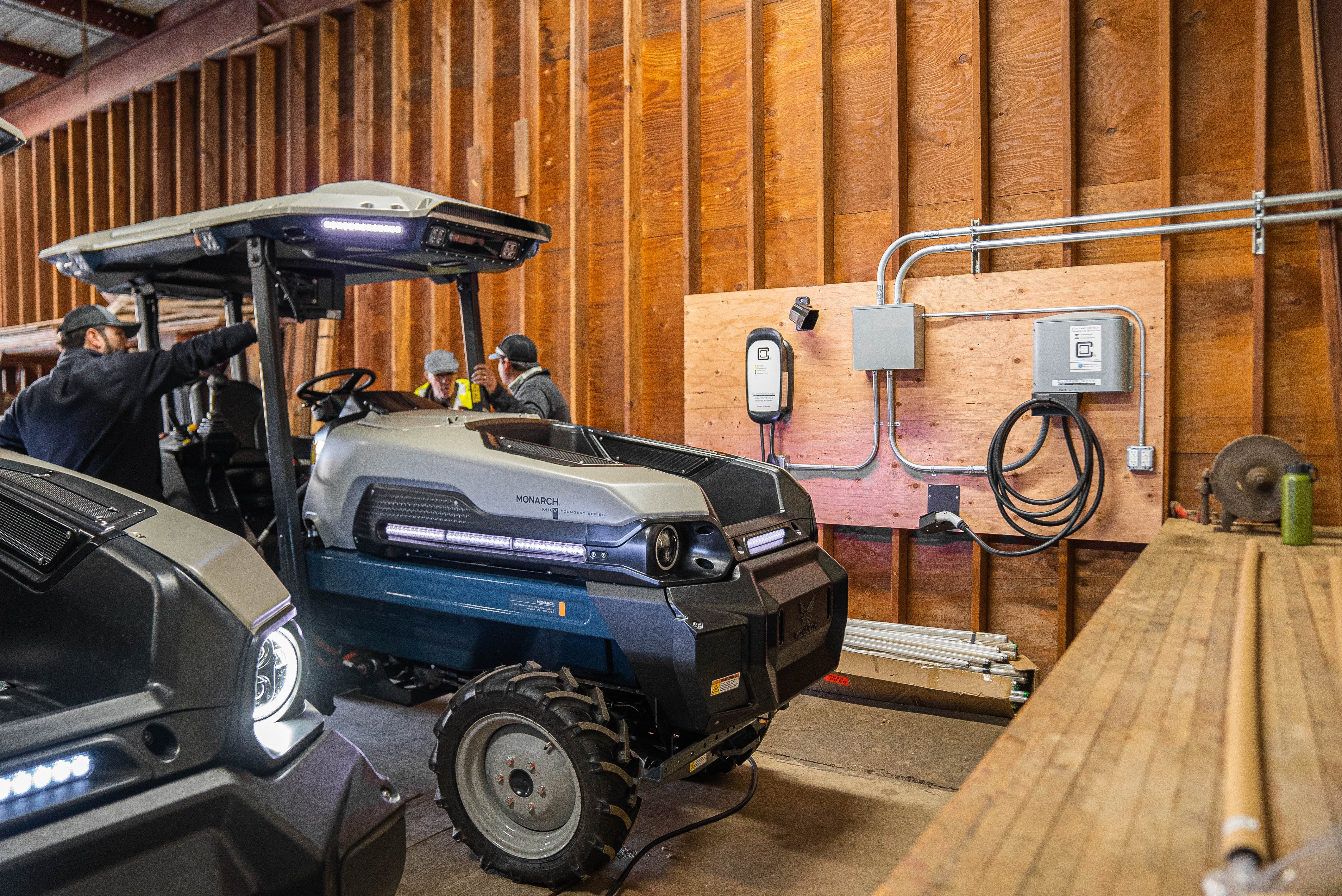
- Connected technology, such as smart sensors and cloud-based platforms, allows farmers to collect, analyze, and leverage farm data. These data-driven insights give farmers the information they need to make more informed decisions about their daily operations and crop health, which can lead to higher yields, lower costs, and a more sustainable farming operation.
As the agriculture industry continues to implement the widespread use of artificial intelligence, specialized crop production apps, and climate-resilient farming, the future will likely hold even more important productivity-boosting farming innovations.
What Are the Most Critical Farming Technologies Today?
In today’s world, a variety of critically important farming technologies are necessary for the vast amount of food production and livestock management that takes place each and every day. Many precision farming and agricultural operations use sophisticated, advanced technologies.
1. Robotics & Autonomous Tools
Robotics along with autonomous tools and equipment are capable of performing a variety of tasks from plowing to planting with reduced human involvement, helping maximize efficiency, minimize labor demands, and improve safety. Stacking automation with other farm technologies elevates gains even more, as evidenced by Monarch’s MK-V electric tractor. By combining electrification, automation, machine-learning, and connectivity, the MK-V enhances operations, cuts overhead costs, reduces emissions, increases labor productivity, and improves safety. Monarch’s ag technology turns the tractor into a farm’s control center as an electric, robotic, and technology platform for gathering and reporting data including maintenance diagnostics.
.jpg?width=3840&height=2160&name=MT_Sept23_Beckstoffer-57%20(1).jpg)
2. Temperature & Moisture Sensors
Temperature and moisture sensors can be positioned around farmland and fences. These technological tools provide real-time data about the environment, allowing farmers to monitor and respond to changes in weather conditions swiftly. This ensures optimal growth conditions for crops and reduces the risk of losses due to unexpected weather changes, an especially valuable feature as extreme weather events become the norm.
3. Aerial Imagery
Aerial imagery provides visibility on the farm from afar. This technology, often facilitated through drones or satellites, provides a bird's eye view of large tracts of land, identifying issues such as crop disease or pest infestations before they can cause significant damage. It's like having a virtual scout, providing essential insights without the need to physically traverse vast acres of land.
4. Global Position System (GPS) Technology
GPS technology plays a crucial role in precision agriculture. It facilitates accurate mapping of farm fields, helps in guiding semi-autonomous and fully autonomous farm machinery, and enables precise application of fertilizers and pesticides, thereby optimizing resource usage and increasing overall farm productivity. Integrating GPS technology with aerial imagery and connectivity allows the MK-V to give farmers greater awareness into what rows and blocks a tractor covered during its operations. .png?width=3840&height=2160&name=MT_April23_BobbyVineyards-PV-65-edited%20(1).png)
5. Farm Management Software
Farm management software leverages big data and data analytics to enhance decision making and improve your agricultural practices. This software is a game-changer for modern farmers. By analyzing data from various sources, it provides insights about optimal planting times, crop rotation strategies, and yield predictions. It's like having a personal agricultural advisor, helping you make data-driven decisions that can significantly enhance your farm's productivity.
These tools have emerged from the tech sector as necessary for agribusinesses to run successfully, maintaining the food systems and meeting world population demands on agriculture. With the right tools and equipment, you can improve your farm management, increase ROI, and scale your operations whether you’re a seasoned produce farmer, a startup, or operating another form of agribusiness.
What Are the Benefits of Innovations in Agricultural Technology?
Innovations in agricultural technology are contributing to significant benefits to farmers and the public at large, including:
Improved Production of Food
With the help of advanced agricultural technologies, farmers have been able to increase the yield per acre, boosting crop production. Recent advancements, such as with Monarch’s MK-V, mean farmers no longer need to choose between increased profits and a healthy environment.
Improved Profits and ROI
By strategically adopting the right agricultural technologies, farmers can significantly increase their efficiency and productivity, leading to higher profits and a better ROI. For produce farmers, this can mean the difference between surviving and thriving for generations to come.
Better Use of Resources
Advanced farming technologies allow for precision agriculture, which enables an optimal use of resources like water, labor, fertilizers, and pesticides. This not only saves costs but strengthens a farm’s long-term viability.
Sustainability
The use of technology in agriculture has the potential to make farming more sustainable both fiscally and environmentally. Advanced tools and techniques can help maintain and even improve soil health, reduce water usage, and minimize or eliminate the use of harmful chemicals. Sustainable agriculture practices lead to better ecological stewardship and a more resilient, healthful future for farming – a benefit for everyone involved, from producers to consumers across the planet. .jpg?width=3840&height=2160&name=MT_May23_Dairy-Riley-247%20(1).jpg)
4 Steps to Adopting New Farming Technologies
To adopt new farming technologies effectively, it’s helpful to follow a basic outline.
1. Assess Your Farm’s Needs and Goals
The first step towards adopting new farming technologies is identifying your farm's needs and goals. Are you aiming to increase crop yield? Would you benefit from reducing water usage or improve soil health? Perhaps you’re looking at ways to be less reliant on external inputs. By identifying these needs and goals, you can pinpoint the type of technology that would be most beneficial for your farm.
2. Research Relevant Technologies and Innovations
Once you've identified your needs and goals, it's time to dive into the world of AgTech and explore available technologies and innovations. This could include everything from precision agriculture tools, automated machinery, and drone technology to software solutions for farm management and data analytics. Look for technologies that align with your goals and reach out to manufacturers for more information or demonstrations.
3. Evaluate Potential Solutions
After researching, create a short list of technologies that could benefit your farm and evaluate these solutions a little more deeply. Consider crucial factors like cost, ease of implementation, compatibility with your existing systems, and the potential ROI. Consider talking to other farmers who've adopted these technologies or read reviews to gain insights into their real-world performance. .jpg?width=3840&height=2160&name=MT_Sept23_Beckstoffer-135%20(4).jpg)
4. Implement Solutions and Evaluate Their Effectiveness
Once you've selected the technology that best fits your needs, it's time to implement it. This may involve purchasing equipment (be sure to look for any available financial incentives), installing software, and training staff. Be prepared for a period of adjustment as you and your team get used to the new technology. Once the technology is in use, be sure to continuously evaluate its effectiveness. Is it helping you achieve your goals? Be sure to communicate openly with the manufacturer to provide feedback and discuss improvements that can help your operations. Adopting new technology is a dynamic process and requires ongoing evaluation and adaptation.
What Are Some Common Misconceptions About Farming Technology Innovations?
While farming and technology have been partners for centuries, misconceptions continue to persist. Shedding light on these mistaken beliefs is key to gaining a thorough and educated understanding of AgTech and determining what is a good fit for your farm. Without this knowledge, you risk missing out on valuable gains for your agribusiness.
Misconception #1: Autonomous Technologies Can Harm Your Farm
Partially autonomous technologies have been deployed on farms for years, but recent developments of using fully autonomous technologies like a driver-optional tractor is unfamiliar territory for many farmers. Even when fully autonomous technologies are incorporated into your operations, these tools are still under your control. Case in point, when deploying Monarch’s MK-V as a driverless tractor, an operator remotely monitors the tractor through an app and can start, stop, and control the speed with the touch of a button. Safeguards through advanced camera technology, vision AI, and machine learning make sure the tractor stops automatically to avoid any potential mishaps and sends an alert to the operator who can review the issue remotely and determine what the tractor should do next. 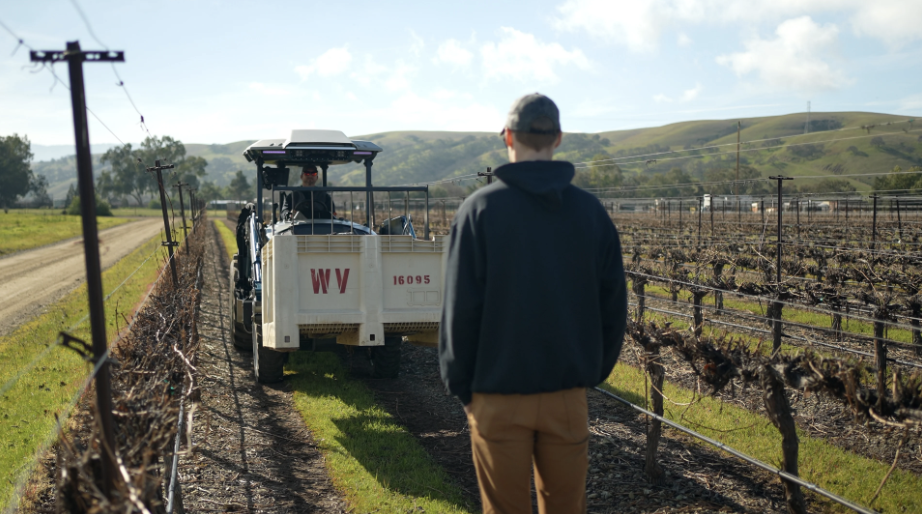
Misconception #2: You Can “Set and Forget” Autonomous Technologies
While it's true that these technologies offer a significant level of freedom compared to traditional farming tech, they do require some level of human oversight. The responsibility is still on operators to monitor activity. With the MK-V, instead of driving one tractor from the driver seat an operator can monitor two or more simultaneously, thus increasing an operator’s productivity anywhere from 25% to 75% depending on the size of the tractor fleet and type of operation.
Misconception #3: Autonomous Technology Is Replacing Jobs
Even with the advent of autonomous technology, there's still a need for human workers to oversee, manage, and maintain these remote tools and techs. Rather than replacing jobs, these tools and technologies help minimize labor-intensive and often dangerous tasks.
According to research from the National Institutes of Health (NIH), farming is a physically demanding job that exposes workers to numerous safety hazards, including heavy lifting, prolonged use of vibrating machinery, and exposure to pesticides, which can contribute to a range of health issues, from musculoskeletal disorders to respiratory problems. By helping farmhands work smarter, autonomous farming technologies can help mitigate these risks, creating a safer and healthier work environment for farm workers.
Case Study in Technology Adoption: Monarch Tractor
As the first tractor company to put a 100% electric, driver-optional, smart tractor on the market, Monarch Tractor is leading the pack in gaining valuable feedback from customers, which it uses to continually improve its product to better serve farmers. Within these customer partnerships, many farms – including Beckstoffer Vineyards, Constellation Brands, NEOTEMPO, and more – have openly shared their experiences. 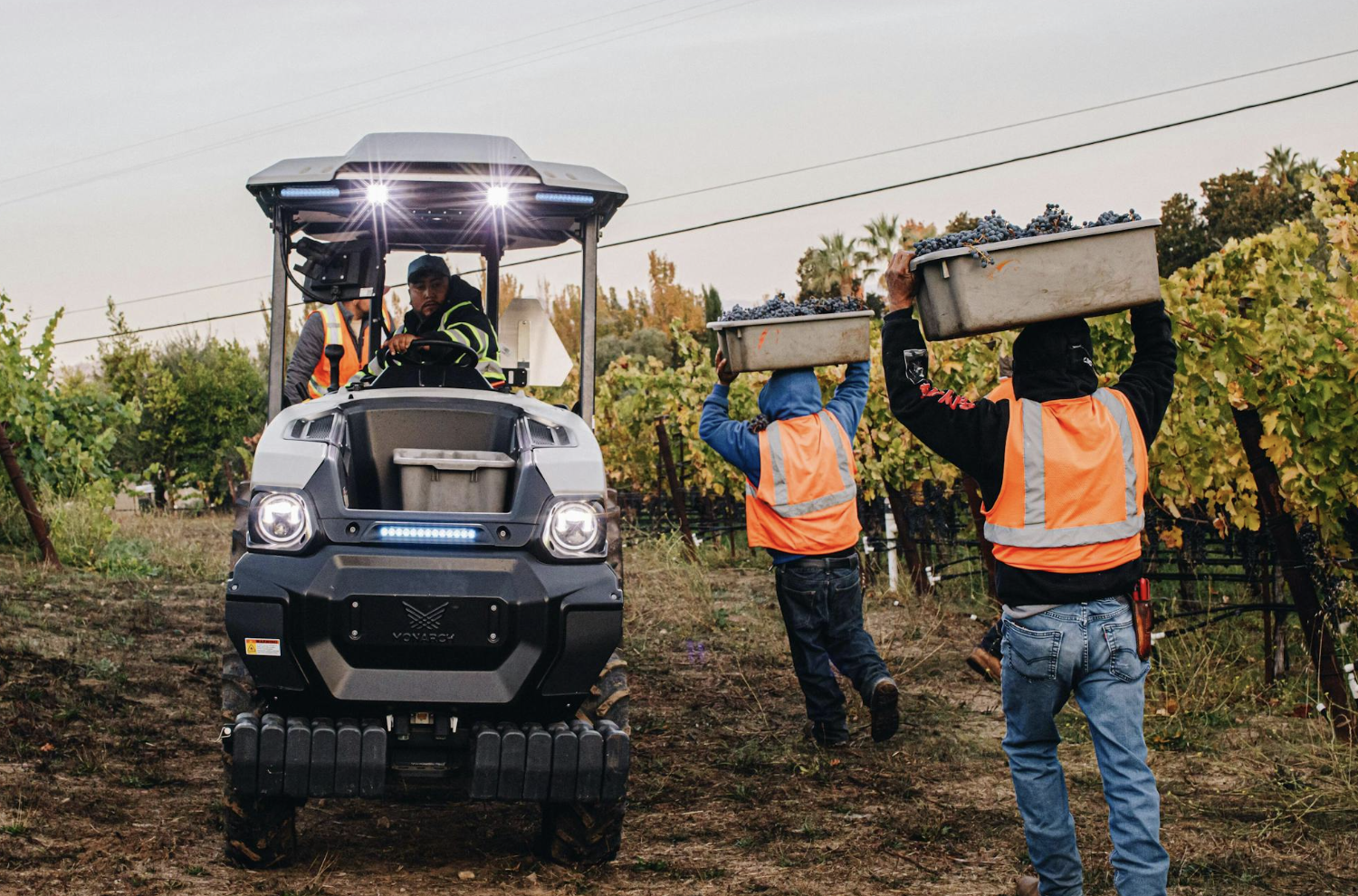 Farm managers and operators report how the adoption of the MK-V has helped them overcome various challenges such as sustainability, time management, and safety. Despite initial skepticism, especially over battery power the tractors proved to be reliable, lasting a full workday on various terrains even with overtime hours. During harvest season, the MK-V supported operations with portable power, lighting, pulling bin trailers, and a safer work environment that is not filled with diesel fumes and generator noise.
Farm managers and operators report how the adoption of the MK-V has helped them overcome various challenges such as sustainability, time management, and safety. Despite initial skepticism, especially over battery power the tractors proved to be reliable, lasting a full workday on various terrains even with overtime hours. During harvest season, the MK-V supported operations with portable power, lighting, pulling bin trailers, and a safer work environment that is not filled with diesel fumes and generator noise.
Technology for Your Agribusiness
Adopting modern farming technologies can help your farm thrive in the modern economy. Knowing how to make farming technology adoption successful is vital to distinguishing your farm from others, making it attractive to retailers, and maximizing the profitability of your farm. You can start exploring AgTech today with Monarch Tractor. With its powerful smart, autonomous, electric tractor, you can begin to maximize your farm’s productivity, improve your profitability, and lead the charge to a healthier food system and sustainable future for everyone.
References:
Huang K-M, Guan Z, Hammami A. The U.S. Fresh Fruit and Vegetable Industry: An Overview of Production and Trade. Agriculture. 2022; 12(10):1719. https://doi.org/10.3390/agriculture12101719
“The Tractor.” Froelich Tractor Museum
https://www.froelichtractor.com/the-tractor.html
Jain, R., Meena, M., Dangayach, G., et al. “Risk factors for musculoskeletal disorders in manual harvesting farmers of Rajasthan.” National Institutes of Health.
https://www.ncbi.nlm.nih.gov/pmc/articles/PMC5985463/
“Bystander killing effect of DS‐8201a, a novel anti‐human epidermal growth factor receptor 2 antibody–drug conjugate, in tumors with human epidermal growth factor receptor 2 heterogeneity.” PMC.
https://www.ncbi.nlm.nih.gov/pmc/articles/PMC4946713/

